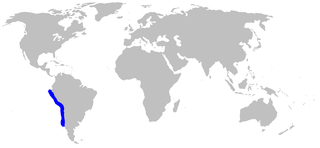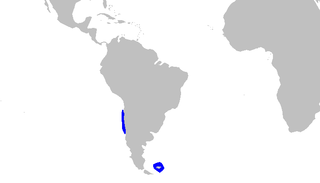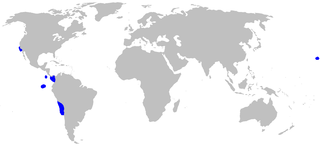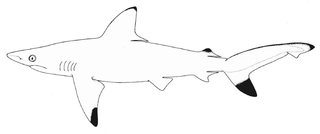| Baryancistrus demantoides | |
|---|---|
 | |
| Scientific classification | |
| Kingdom: | Animalia |
| Phylum: | Chordata |
| Class: | Actinopterygii |
| Order: | Siluriformes |
| Family: | Loricariidae |
| Genus: | Baryancistrus |
| Species: | B. demantoides |
| Binomial name | |
| Baryancistrus demantoides Werneke, Sabaj Pérez, Lujan & Armbruster, 2005 | |
Baryancistrus demantoides is a species of armored catfish endemic to Venezuela. It reaches a length of 15.1 centimetres (5.9 in) SL.It lives around granite rocks in flowing water, in the upper parts of Orinoco River. [1]
In biology, a species ( ) is the basic unit of classification and a taxonomic rank of an organism, as well as a unit of biodiversity. A species is often defined as the largest group of organisms in which any two individuals of the appropriate sexes or mating types can produce fertile offspring, typically by sexual reproduction. Other ways of defining species include their karyotype, DNA sequence, morphology, behaviour or ecological niche. In addition, paleontologists use the concept of the chronospecies since fossil reproduction cannot be examined. While these definitions may seem adequate, when looked at more closely they represent problematic species concepts. For example, the boundaries between closely related species become unclear with hybridisation, in a species complex of hundreds of similar microspecies, and in a ring species. Also, among organisms that reproduce only asexually, the concept of a reproductive species breaks down, and each clone is potentially a microspecies.

Loricariidae is the largest family of catfish, with 92 genera and just over 680 species to date, with new species being described each year. Loricariids originate from freshwater habitats of Costa Rica, Panama, and tropical and subtropical South America. These fish are noted for the bony plates covering their bodies and their suckermouths. Several genera are sold as "plecos", notably the suckermouth catfish, Hypostomus plecostomus, and are popular as aquarium fish.

Endemism is the ecological state of a species being unique to a defined geographic location, such as an island, nation, country or other defined zone, or habitat type; organisms that are indigenous to a place are not endemic to it if they are also found elsewhere. The extreme opposite of endemism is cosmopolitan distribution. An alternative term for a species that is endemic is precinctive, which applies to species that are restricted to a defined geographical area.
The colour is green-brown with yellow spots on the head and parts of the body. The dorsal fin is connected to the adipose fin, a feature that distinguishes this species from the rest of the Ancistrini, except Baryancistrus niveatus , Parancistrus and Spectracanthicus . [2]

A dorsal fin is a fin located on the back of most marine and freshwater vertebrates such as fishes, cetaceans, and the (extinct) ichthyosaur. Most species have only one dorsal fin, but some have two or three.

Ancistrini is a tribe of catfishes of the family Loricariidae. Most are restricted to tropical and subtropical South America, but there are also several genus in southern Central America.
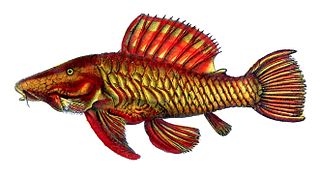
Parancistrus is a small genus of suckermouth armored catfishes native to South America.
Baryancistrus demantoides is one of two species described with L-number 200, the other is Hemiancistrus subviridis , which also resembles Baryancistrus demantoides in appearance. [2]

The L-number system is a pseudo-scientific classification system of catfish based on photographs of shipments of tropical catfish of the family Loricariidae published by the German aquarium magazine DATZ. The first L-number was published in 1988.











